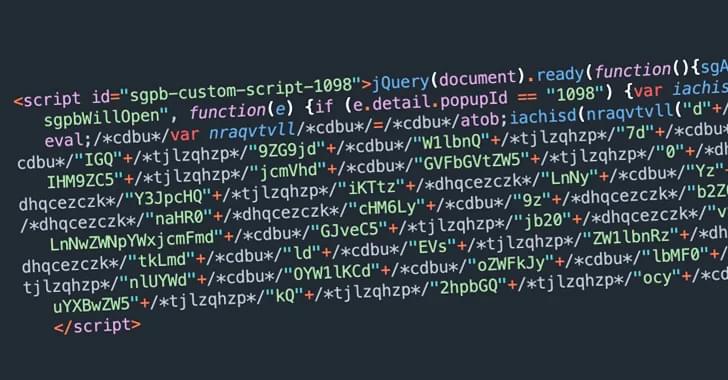Archive for the ‘cybercrime/malcode’ category: Page 26
Jan 18, 2024
New Docker Malware Steals CPU for Crypto & Drives Fake Website Traffic
Posted by Shubham Ghosh Roy in categories: cryptocurrencies, cybercrime/malcode
A new attack targets Docker servers and uses a combo of cryptocurrency mining and website traffic generation for profit. It could leave a backdoor for attackers to exploit later. Patch your systems and monitor for suspicious activity:
Jan 17, 2024
In Leaked Audio, Microsoft Cherry-Picked Examples to Make Its AI Seem Functional
Posted by Kelvin Dafiaghor in categories: cybercrime/malcode, robotics/AI
Microsoft “cherry-picked” examples of its generative AI’s output after it would frequently “hallucinate” incorrect responses, Business Insider reports.
The scoop comes from leaked audio of an internal presentation on an early version of Microsoft’s Security Copilot, a ChatGPT-like AI tool designed to help cybersecurity professionals.
According to BI, the audio contains a Microsoft researcher discussing the results of “threat hunter” tests in which the AI analyzed a Windows security log for possible malicious activity.
Jan 15, 2024
Researchers develop AI-driven Machine-Checking Method for Verifying Software Code
Posted by Natalie Chan in categories: cybercrime/malcode, robotics/AI
A team of computer scientists led by the University of Massachusetts Amherst recently announced a new method for automatically generating whole proofs that can be used to prevent software bugs and verify that the underlying code is correct.
This new method, called Baldur, leverages the artificial intelligence power of large language models (LLMs), and when combined with the state-of-the-art tool Thor, yields unprecedented efficacy of nearly 66%. The team was recently awarded a Distinguished Paper award at the ACM Joint European Software Engineering Conference and Symposium on the Foundations of Software Engineering.
“We have unfortunately come to expect that our software is buggy, despite the fact that it is everywhere and we all use it every day,” says Yuriy Brun, professor in the Manning College of Information and Computer Sciences at UMass Amherst and the paper’s senior author.
Jan 15, 2024
Balada Injector Infects Over 7,100 WordPress Sites Using Plugin Vulnerability
Posted by Shubham Ghosh Roy in categories: biotech/medical, cybercrime/malcode
⚠️ Over 7,100 WordPress sites have been hit by the ‘Balada Injector’ malware, which exploits sites using a vulnerable version of the Popup Builder plugin. Read More ➡️ https://thehackernews.com/2024/01/balada-injector-infects-over-7100.htm
Thousands of WordPress sites using a vulnerable version of the Popup Builder plugin have been compromised with a malware called Balada Injector.
First documented by Doctor Web in January 2023, the campaign takes place in a series of periodic attack waves, weaponizing security flaws WordPress plugins to inject backdoor designed to redirect visitors of infected sites to bogus tech support pages, fraudulent lottery wins, and push notification scams.
Continue reading “Balada Injector Infects Over 7,100 WordPress Sites Using Plugin Vulnerability” »
Jan 11, 2024
Linux devices are under attack by a never-before-seen worm
Posted by Shubham Ghosh Roy in category: cybercrime/malcode
https://arstechnica.com/security/2024/01/a-previously-unknow…or-a-year/ # Linux Comments: https://news.ycombinator.com/item?id=38942102
Based on Mirai malware, self-replicating NoaBot installs cryptomining app on infected devices.
Jan 11, 2024
New report identifies types of cyberattacks that manipulate behavior of AI systems
Posted by Saúl Morales Rodriguéz in categories: cybercrime/malcode, government, robotics/AI
Adversaries can deliberately confuse or even “poison” artificial intelligence (AI) systems to make them malfunction—and there’s no foolproof defense that their developers can employ. Computer scientists from the National Institute of Standards and Technology (NIST) and their collaborators identify these and other vulnerabilities of AI and machine learning (ML) in a new publication.
Their work, titled Adversarial Machine Learning: A Taxonomy and Terminology of Attacks and Mitigations, is part of NIST’s broader effort to support the development of trustworthy AI, and it can help put NIST’s AI Risk Management Framework into practice. The publication, a collaboration among government, academia, and industry, is intended to help AI developers and users get a handle on the types of attacks they might expect along with approaches to mitigate them—with the understanding that there is no silver bullet.
“We are providing an overview of attack techniques and methodologies that consider all types of AI systems,” said NIST computer scientist Apostol Vassilev, one of the publication’s authors. “We also describe current mitigation strategies reported in the literature, but these available defenses currently lack robust assurances that they fully mitigate the risks. We are encouraging the community to come up with better defenses.”
Jan 10, 2024
Spy Vs. Spy: In The ChatGPT Era, Who’s On First?
Posted by Shubham Ghosh Roy in categories: cybercrime/malcode, robotics/AI
Adam Stern is Founder and CEO of Infinitely Virtual, provider of cloud technology solutions, based in Los Angeles. Twitter: @iv_cloudhosting
Back in the 1960s, when the U.S. faced off against the Soviets, MAD Magazine initiated a snarky proxy war in the form of a recurring comic strip that pitted two animated spies attempting to outsmart each other. In “Spy vs. Spy,” there were no permanent victors.
Fast forward to the ChatGPT generation. In cybersecurity, it’s AI vs AI now, and the black-hatted figure versus the guy in the white hat is no longer as binary as it once was.
Jan 8, 2024
New Dangerous Cyberattacks Target AI Systems
Posted by Shubham Ghosh Roy in categories: biotech/medical, cybercrime/malcode, robotics/AI
This post is also available in:  עברית (Hebrew)
עברית (Hebrew)
A new report by Computer scientists from the National Institute of Standards and Technology presents new kinds of cyberattacks that can “poison” AI systems.
AI systems are being integrated into more and more aspects of our lives, from driving vehicles to helping doctors diagnose illnesses to interacting with customers as online chatbots. To perform these tasks the models are trained on vast amounts of data, which in turn helps the AI predict how to respond in a given situation.
Jan 5, 2024
Robustly learning the Hamiltonian dynamics of a superconducting quantum processor
Posted by Cecile G. Tamura in categories: cybercrime/malcode, information science, quantum physics
 The required precision to perform quantum simulations beyond the capabilities of classical computers imposes major experimental and theoretical challenges. The key to solving these issues are highly precise ways of characterizing analog quantum sim ulators. Here, we robustly estimate the free Hamiltonian parameters of bosonic excitations in a superconducting-qubit analog quantum simulator from measured time-series of single-mode canonical coordinates. We achieve the required levels of precision in estimating the Hamiltonian parameters by maximally exploiting the model structure, making it robust against noise and state-preparation and measurement (SPAM) errors. Importantly, we are also able to obtain tomographic information about those SPAM errors from the same data, crucial for the experimental applicability of Hamiltonian learning in dynamical quantum-quench experiments. Our learning algorithm is highly scalable both in terms of the required amounts of data and post-processing. To achieve this, we develop a new super-resolution technique coined tensorESPRIT for frequency extraction from matrix time-series. The algorithm then combines tensorESPRIT with constrained manifold optimization for the eigenspace reconstruction with pre-and post-processing stages. For up to 14 coupled superconducting qubits on two Sycamore processors, we identify the Hamiltonian parameters — verifying the implementation on one of them up to sub-MHz precision — and construct a spatial implementation error map for a grid of 27 qubits. Our results constitute a fully characterized, highly accurate implementation of an analog dynamical quantum simulation and introduce a diagnostic toolkit for understanding, calibrating, and improving analog quantum processors.
The required precision to perform quantum simulations beyond the capabilities of classical computers imposes major experimental and theoretical challenges. The key to solving these issues are highly precise ways of characterizing analog quantum sim ulators. Here, we robustly estimate the free Hamiltonian parameters of bosonic excitations in a superconducting-qubit analog quantum simulator from measured time-series of single-mode canonical coordinates. We achieve the required levels of precision in estimating the Hamiltonian parameters by maximally exploiting the model structure, making it robust against noise and state-preparation and measurement (SPAM) errors. Importantly, we are also able to obtain tomographic information about those SPAM errors from the same data, crucial for the experimental applicability of Hamiltonian learning in dynamical quantum-quench experiments. Our learning algorithm is highly scalable both in terms of the required amounts of data and post-processing. To achieve this, we develop a new super-resolution technique coined tensorESPRIT for frequency extraction from matrix time-series. The algorithm then combines tensorESPRIT with constrained manifold optimization for the eigenspace reconstruction with pre-and post-processing stages. For up to 14 coupled superconducting qubits on two Sycamore processors, we identify the Hamiltonian parameters — verifying the implementation on one of them up to sub-MHz precision — and construct a spatial implementation error map for a grid of 27 qubits. Our results constitute a fully characterized, highly accurate implementation of an analog dynamical quantum simulation and introduce a diagnostic toolkit for understanding, calibrating, and improving analog quantum processors.
Submitted 18 Aug 2021 to Quantum Physics [quant-ph]
Subjects: quant-ph cond-mat.quant-gas physics.comp-ph.

















